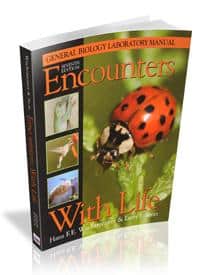What's New in this Edition
- This edition features many new and improved photographic representations of organisms your students will observe in the laboratory.
- Selected exercises now feature a series of investigative questions, under the heading “Using the Scientific Method”, that ask students to think about what they are trying to accomplish in the lab. These questions ask students to create hypotheses, predict test results, and then draw conclusions once the experiment is completed.
- The entire manual has been thoroughly reviewed to improve readability and the glossary has been expanded to further assist your student’s ability to understand the material.
- A complete instructor’s manual is available online.

